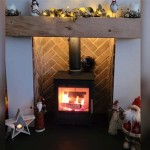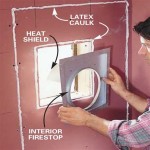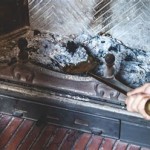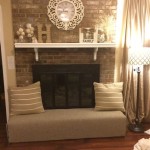Fireplace Mantels: A Comprehensive Guide
Fireplace mantels serve as more than just decorative elements; they are integral architectural components that contribute significantly to the aesthetic and functional value of a fireplace and the surrounding room. They provide a focal point, anchor the fireplace design, and offer a surface for displaying decorative items. The selection of a suitable fireplace mantel requires careful consideration of style, material, size, and installation, ensuring it complements both the fireplace and the overall architectural design of the space.
The history of fireplace mantels dates back centuries, evolving from simple stone ledges used to catch soot and embers to elaborate, ornate structures showcasing craftsmanship and reflecting the prevailing stylistic trends. Initially practical in purpose, they quickly became symbols of status and wealth, adorned with intricate carvings, moldings, and decorative details. Today, fireplace mantels continue to be valued for their aesthetic appeal and ability to enhance the ambiance and value of a home.
Understanding the Purpose and Function of a Fireplace Mantel
The core purpose of a fireplace mantel extends beyond mere aesthetics. Functionally, it provides a protective barrier, directing heat away from the wall above the fireplace and preventing damage caused by prolonged exposure to high temperatures. This function is particularly crucial for older fireplaces that might lack modern insulation. Modern fireplaces, including those using gas or electricity, often still incorporate mantels for aesthetic enhancement, even if the heat output is significantly lower.
Beyond protection, a fireplace mantel offers a convenient surface for displaying decorative objects. From family photos and artwork to seasonal decorations and collectibles, the mantel provides a prime location for showcasing personal style and adding character to the room. The mantel's visual presence allows for the creation of visually appealing vignettes, drawing the eye and serving as a conversation starter.
Furthermore, a mantel can serve as an architectural anchor, defining the fireplace area and helping to integrate it seamlessly into the overall design of the room. By choosing a mantel that complements the existing architectural style, symmetry, and balance can be achieved, enhancing the visual harmony of the space. The style of the mantel can also be used to introduce a particular design theme or aesthetic, from traditional and classic to modern and minimalist.
Exploring the Variety of Fireplace Mantel Materials
The selection of material for a fireplace mantel is a crucial decision that significantly impacts its appearance, durability, and cost. A wide range of materials is available, each with its own unique characteristics and advantages.
Wood is a classic and versatile choice, offering a warm and inviting aesthetic. Different types of wood, such as oak, maple, pine, and cherry, provide varying grain patterns and color tones. Wood mantels can be stained, painted, or left natural to complement the surrounding décor. A properly sealed and maintained wood mantel can provide years of beauty and durability. However, wood mantels require consideration of clearances from the firebox to prevent combustion.
Stone mantels, including those made from marble, granite, and limestone, exude sophistication and timeless elegance. Stone offers inherent durability and heat resistance, making it a practical choice for fireplaces. The unique veining and patterns found in natural stone add character and visual interest. Stone can be carved and shaped to create intricate designs and architectural details. It's a heavier, more expensive option, often requiring professional installation.
Cast stone is a popular alternative to natural stone, offering a similar aesthetic at a more affordable price point. Cast stone is created by mixing cement with aggregates and pigments, allowing for customization in color and texture. It's durable, heat-resistant, and can be molded into a variety of shapes and designs. This material can mimic the look of natural stone without the weight or expense.
Metal mantels are becoming increasingly popular, particularly in contemporary and industrial-style homes. Steel and iron mantels offer a sleek and modern look, while also providing durability and heat resistance. Metal mantels can be powder-coated or finished with a variety of textures and colors. The clean lines and minimalist aesthetic of metal mantels make them a versatile choice for modern interiors.
Brick is another material option that can be incorporated in a mantel design. Brick mantels can be built as an integral part of the fireplace structure, adding a rustic and charming touch. Brick can be painted or left exposed, showcasing its natural texture and color variations. It is a naturally fire resistant material, providing an added measure of safety.
Navigating Fireplace Mantel Styles and Designs
The style of a fireplace mantel should complement the overall architectural style of the room and reflect the homeowner's personal taste. A diverse range of styles are available, catering to various aesthetic preferences.
Traditional mantels often feature ornate carvings, intricate moldings, and classic architectural details. These mantels typically incorporate elements such as fluted pilasters, dentil moldings, and decorative corbels. Traditional mantels are often made from wood or stone and evoke a sense of timeless elegance and sophistication. Such a mantel evokes historical design, such as those from the Victorian or Georgian eras.
Modern mantels embrace simplicity and minimalism, featuring clean lines, geometric shapes, and understated details. These mantels are often made from materials such as metal, concrete, or wood with a sleek finish. Modern mantels emphasize functionality and a minimalist aesthetic, seamlessly integrating into contemporary interiors.
Rustic mantels evoke a sense of warmth and natural charm, featuring reclaimed wood, exposed beams, and distressed finishes. These mantels often incorporate elements such as live edges, knots, and natural imperfections. Rustic mantels work well in farmhouse-style, cabin-style, or country-style homes, adding a touch of character and authenticity.
Contemporary mantels blend elements of modern and traditional styles, creating a unique and eclectic look. These mantels often feature asymmetrical designs, unexpected material combinations, and bold color palettes. Contemporary mantels allow for creative expression and personalization, reflecting the homeowner's individual style.
Floating mantels offer a clean and minimalist aesthetic, appearing to float seamlessly along the wall. These mantels are typically made from wood or stone and are mounted using hidden brackets or supports. Floating mantels create a sense of spaciousness and are a popular choice for modern and contemporary interiors.
Installation Considerations and Safety Regulations
Proper installation is paramount for the safety and functionality of a fireplace mantel. Installation procedures vary depending on the type of mantel, the fireplace construction, and local building codes.
Clearance requirements are crucial to prevent fire hazards. Building codes typically specify minimum distances between the mantel and the firebox opening. These clearances ensure that the mantel does not overheat and ignite. Local building codes should always be consulted for specific requirements. If the mantel is made of combustible materials, such as wood, these clearances are particularly important.
For wood mantels, a non-combustible heat shield may be required to protect the wood from direct heat exposure. Heat shields are typically made from metal or other fire-resistant materials and are installed between the mantel and the firebox. This protects the wood from ignition if the wood mantel is closer than local building codes specify.
The weight of the mantel must be adequately supported. Heavy mantels, such as those made from stone or cast stone, may require additional structural support. Proper anchoring and mounting are essential to prevent the mantel from collapsing or becoming dislodged. This can be accomplished using heavy duty brackets and mounting hardware.
Professional installation is often recommended, particularly for complex installations or when dealing with heavy mantels. A qualified contractor can ensure that the mantel is installed safely and according to code regulations. It is especially important to consult a professional if working with gas or electrical fireplaces.
Maintaining and Caring for a Fireplace Mantel
Proper maintenance is essential to preserve the beauty and longevity of a fireplace mantel. Different materials require different care techniques.
Wood mantels should be regularly dusted and cleaned with a mild, non-abrasive cleaner. Harsh chemicals or abrasive cleaners can damage the finish. Periodically, wood mantels may need to be refinished to restore their luster and protect the wood. Care should be taken to avoid excessive moisture, as this can lead to warping or cracking.
Stone mantels can be cleaned with a mild soap and water solution. Avoid using acidic cleaners, which can etch or damage the stone. Sealants may be applied to stone mantels to protect them from staining. Natural stone requires specific cleansers and maintenance to preserve its natural beauty.
Metal mantels can be cleaned with a damp cloth. Avoid using abrasive cleaners, which can scratch the surface. Rust inhibitors may be applied to metal mantels to prevent corrosion. It is important to maintain the protective finishes on metal mantels.
Regularly inspect the mantel for cracks, chips, or other signs of damage. Address any issues promptly to prevent further deterioration. Regular maintenance can help extend the life of the mantel for many years.
By understanding the purpose, materials, styles, installation, and maintenance of fireplace mantels, individuals can make informed decisions when selecting and caring for this important architectural element. A well-chosen and properly maintained fireplace mantel can enhance the beauty, functionality, and value of a home for years to come.

Fireplace Mantels Mantel Shelves Custom Surrounds And More Direct

Barnwood Fireplace Mantel The Collection

Country Living 72 In W X 5 H 9 D White Wash Pine Hollow Farmhouse Fireplace Mantel The Mantels Department At Com

Fireplace Mantels Mantel Shelves Custom Surrounds And More Direct

Wood N Finish Fireplace Mantel Kit Walnut

White 52 Inch X 39 Wood Fireplace Mantel Surround Kit With Shelf And Trim Essex From Mantels Direct Poplar Wooden Chimney Com

Collection Of Premium Wood Fireplace Mantels Dogberry

Fireplace Mantel 8 By 66 Long Corbels Included Solid Wood Pine Hand Hewn Customizable

65 Jim White Fireplace Mantel

Fireplace Mantels Shelves We Love Fire
Related Posts








